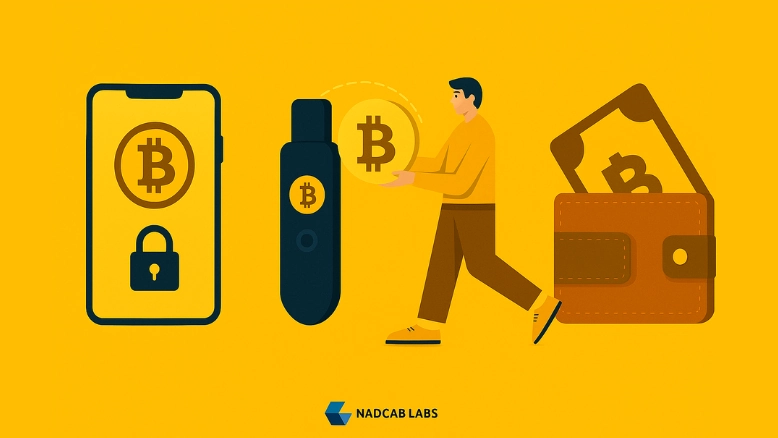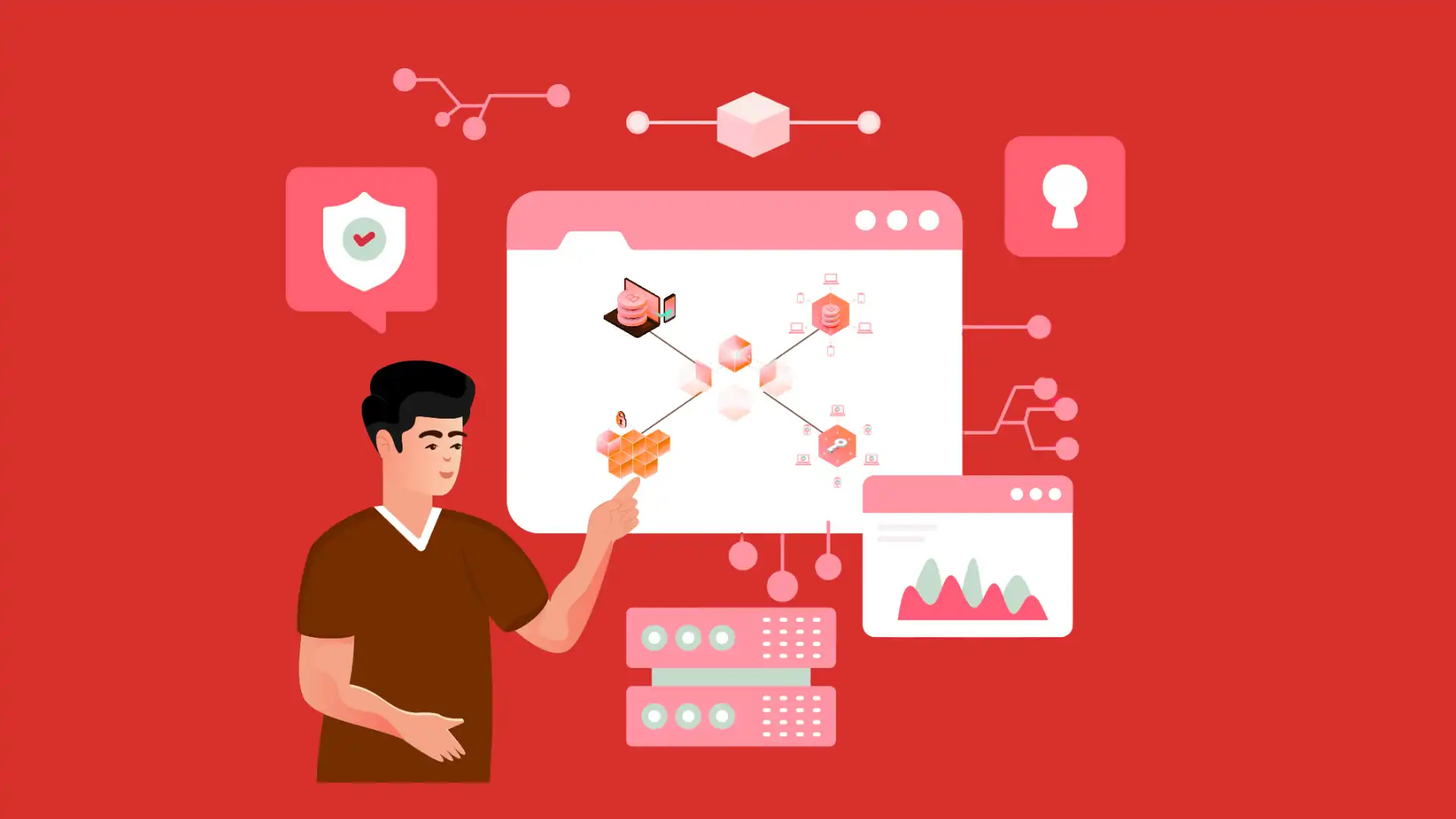
In 2025, this technology continues to disrupt various industries, especially in crypto and FinTech. Its evolution goes beyond cryptocurrency, finding applications in supply chain management, secure digital identities, decentralized finance (DeFi), and more. At the heart of these innovations are specialized frameworks that offer a foundation for building and managing decentralized applications (dApps) and other distributed systems.
For businesses looking to harness the potential of blockchain, collaborating with a development company that understands the nuances of the technology is key. In this guide, we’ll explore frameworks in the crypto and FinTech space, explain their significance, and help you choose the best one for your specific needs.
What Are Blockchain Frameworks?
A blockchain framework is essentially a toolkit for building decentralized applications. It typically includes pre-designed templates, libraries, and APIs that developers can use to create a secure and scalable ecosystem. These frameworks streamline the development process by providing essential features like consensus mechanisms, smart contract engines, and security protocols.
Development services are critical for those looking to integrate this technology into their operations. Using a robust framework can save time and resources while ensuring the final product is secure and functional. The role of developers is vital in selecting the right framework for each project, ensuring it aligns with the technological requirements.
Core Components of Blockchain Frameworks
These frameworks are complex systems with multiple components that work together to form a secure, functional blockchain network.
-
Consensus Mechanisms
One of the most critical aspects of any blockchain framework is its consensus mechanism. Consensus ensures that all participants on the network agree on the state of the distributed ledger. Different frameworks use various consensus algorithms, including Proof of Work (PoW), Proof of Stake (PoS), and Proof of Authority (PoA). The choice of consensus mechanism can significantly impact the security, speed, and scalability of the network.
-
Smart Contract Engines
Another important feature is the smart contract engine. Smart contracts are self-executing contracts with the terms of the agreement directly written into code. Blockchain frameworks typically come with tools that allow developers to create, deploy, and manage these contracts. This capability is especially crucial for industries like DeFi, where smart contracts automate and secure financial transactions.
-
Data Layer
The data layer of a blockchain framework manages how data is stored and organized, including the structure of blocks and how information is linked across the network. A well-designed data layer enhances scalability, which is essential for supporting an increasing number of users and transactions.
-
Network Layer
The network layer handles how the nodes (computers participating in the blockchain network) communicate with one another. This layer ensures that transactions are verified and propagated across the network efficiently and securely.
-
Governance Tools
Governance tools are essential for managing the blockchain network. These tools allow stakeholders to make decisions regarding protocol upgrades, changes, or new features. The governance system can be either on-chain or off-chain, with on-chain governance being a more decentralized approach.
-
Interoperability Modules
In the blockchain space, interoperability refers to the ability of different networks to communicate and share data. Interoperability modules are integral parts of modern frameworks, enabling data and asset transfers across chains to create a seamless cross-chain ecosystem.
The Role of Blockchain in 2025: A Crypto and FinTech Overview
This technology has graduated from experimental phases into mission-critical infrastructure. In the crypto sector, it enables decentralized exchanges, token economies, DAOs, and permissionless lending platforms. In FinTech, it delivers tangible improvements in efficiency, security, and transparency, particularly in areas like payment processing, compliance, identity verification, and digital asset management.
In 2025, FinTech has expanded well beyond traditional banking services. Blockchain is central to digital wallets, asset tokenization, programmable payments, and decentralized lending protocols. Businesses seeking to stay competitive often partner with specialized development firms to design FinTech products that are secure, scalable, and compliant with financial regulations.
Blockchain-Ads for fintech advertising have also emerged as a unique application of decentralized technology in the marketing space, helping FinTech companies reach targeted audiences in a transparent way.
Key Applications in Crypto
In the crypto space, specialized frameworks are used to develop decentralized applications that provide financial services without traditional intermediaries. Development firms are increasingly focusing on these applications, which include decentralized lending platforms, cryptocurrency exchanges, and more. These frameworks are also crucial in the development of NFT marketplaces and decentralized autonomous organizations (DAOs).
Key Applications in FinTech
Frameworks are making waves in the FinTech industry as well. By using smart contracts, financial institutions can streamline processes like insurance claims, remittance, and loan disbursements. Additionally, blockchain enhances the security and transparency of digital identities, helping to prevent fraud in financial transactions.
Top Blockchain Frameworks of 2025
-
Ethereum 2.0
Ethereum 2.0 is one of the most well-known frameworks, recognized for its shift from Proof of Work (PoW) to Proof of Stake (PoS). This upgrade significantly reduces energy consumption while improving scalability. Ethereum 2.0 leads in DeFi, gaming, and NFT development, making it a preferred choice for many developers aiming to build secure and decentralized applications.
-
Hyperledger Fabric
Hyperledger Fabric is a permissioned framework built for enterprise applications. It provides modular components, including smart contract engines and consensus modules, making it highly customizable. Many enterprises looking to adopt blockchain for business use, especially in sectors like healthcare and finance, choose Hyperledger as it offers privacy and compliance features critical for regulatory environments.
-
Polkadot & Substrate
Polkadot and Substrate are cutting-edge frameworks designed for creating multi-chain ecosystems. Polkadot enables interoperability between different networks, allowing data and assets to move freely across diverse chains. Substrate, meanwhile, lets developers build custom blockchains tailored to their unique requirements, making it an excellent choice for specialized development.
-
Avalanche
Avalanche is a fast and scalable blockchain framework that supports smart contracts and DeFi applications. Its ability to process thousands of transactions per second makes it ideal for high-demand applications. Many companies choose Avalanche for its speed and low-cost transactions, especially in the DeFi sector.
-
Cosmos SDK
The Cosmos SDK is a framework designed for building interoperable chains. It allows developers to create customized networks that can communicate with others in the Cosmos ecosystem. This framework is especially useful for projects requiring high customization and scalability.
Each of these frameworks offers unique benefits, and selecting the right one involves careful consideration of project requirements. A reliable development company can help navigate the trade-offs and align technological choices with business goals.
Strategic Considerations for Framework Selection
When selecting a blockchain framework for your project, it’s crucial to consider your specific needs. Will your project require high scalability? Or does it need a high level of privacy?
- Identify Project Needs: Determine if your project requires high scalability, enhanced privacy, or specific consensus mechanisms.
- Define Use Case Requirements: Match the blockchain framework with your business goals and technical needs.
- Evaluate Scalability: If your application is expected to handle a high volume of transactions, choose a framework that supports large-scale operations.
- Consider Privacy Needs: For sensitive data, select a framework that offers robust privacy features.
- Consult Distributed Ledger Experts: Expert developers can assess technical requirements and recommend the most suitable framework.
- Align with Project Goals: Ensure the chosen framework supports your long-term vision and operational needs.
Future Trends and Predictions
Looking forward, the future of blockchain frameworks appears bright. We can anticipate ongoing advancements in zero-knowledge proofs to boost privacy, along with the integration of artificial intelligence (AI) to streamline and automate processes. Additionally, as technology advances, quantum-resistant encryption will take center stage, further strengthening security for upcoming applications.
Ready for Blockchain? Let’s Get Started!
Frameworks have become key building blocks for developing decentralized applications in today’s fast-moving crypto and FinTech landscape. These tools empower developers to create secure, scalable, and high-performance solutions that are reshaping industries. For businesses aiming to adopt this technology, teaming up with a custom development company is crucial for achieving long-term success. With the support of experienced developers and advanced software services, your business can gain a strong competitive edge in the digital economy.
There’s no better time than now to start exploring, innovating, and building with blockchain frameworks—this guide is your gateway to leading the charge in the 2025 Crypto and FinTech revolution.





